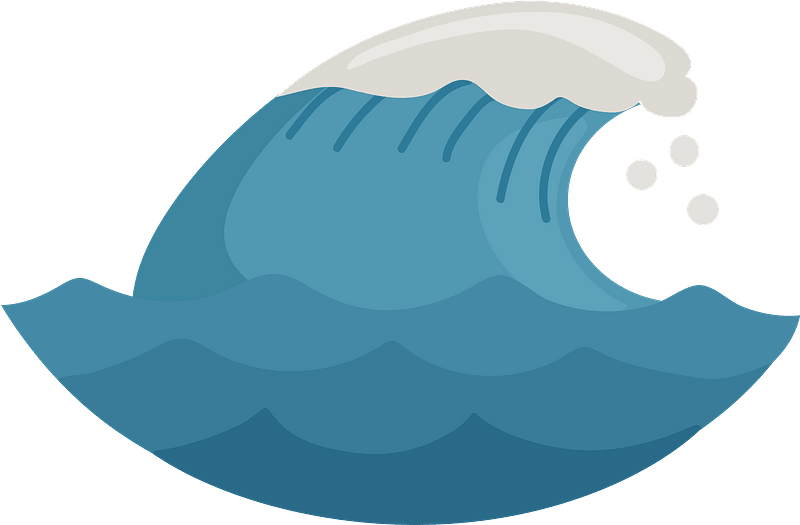The 6 Stages Of Drowning and How To Prevent It - All You Need To Know [2023]

By Maria Rezhylo
3x World Record Holder in swimming & Swim School owner
Updated on Feb. 19, 2023
Updated on Feb. 19, 2023
CALL 911 OR YOUR LOCAL EMERGENCY NUMBER IF: the person's condition is life threatening; the person's condition could become life threatening on the way to the hospital; moving the person could cause further injury; the person needs the skills or equipment of paramedics.
Contents
 What Is Drowning
What Is Drowning The 6 Stages Of Drowning
The 6 Stages Of Drowning Chapter 2Child & Adults Drowning Statistics
Chapter 2Child & Adults Drowning Statistics Child Drowning Prevention Guide
Child Drowning Prevention Guide Adult Drowning Prevention Guide
Adult Drowning Prevention Guide What Does It Feel Like to Drown?
What Does It Feel Like to Drown?
What is Drowning?
INTRODUCTION TO DROWNING
Understanding drowning
What is dry and wet drowning and how long does it take someone to drown?
Drowning is a life-threatening process of respiratory impairment characterized by the inability to breathe due to a person falling into water or other liquid. Although people tend to think that drowning is caused by liquid filling the lungs, it's not necessarily the case. Drownings used to be classified as wet and dry.
Drowning usually causes laryngospasm (spasm of the vocal cords), making breathing and speaking difficult for a victim. In most cases, the laryngospasm relaxes, and water fills the lungs. Historically, this used to be called wet drowning.
On the other hand, dry drowning occurs when vocal cords don't relax. Therefore, no water can enter the lungs. Dry drowning only occurs in 10% to 20% of the cases. Today, science tells us that it doesn't matter what kind of drowning occurred because wet and dry drownings result in hypoxia. In the state of hypoxia, the viability of brain cells is maintained for no more than 5-6 minutes.
Drowning usually causes laryngospasm (spasm of the vocal cords), making breathing and speaking difficult for a victim. In most cases, the laryngospasm relaxes, and water fills the lungs. Historically, this used to be called wet drowning.
On the other hand, dry drowning occurs when vocal cords don't relax. Therefore, no water can enter the lungs. Dry drowning only occurs in 10% to 20% of the cases. Today, science tells us that it doesn't matter what kind of drowning occurred because wet and dry drownings result in hypoxia. In the state of hypoxia, the viability of brain cells is maintained for no more than 5-6 minutes.

The larynx includes your vocal cords. Drowning is associated with laryngospasm, which means that vocal cords are paralyzed and closed down together tightly. If vocal cords eventually open, the victim's lungs will be filled with liquid.
What Are The 6 Stages Of Drowning?
What Are The 6 Stages Of Drowning?
CHAPTER 1
Drowning is a tragic water incident with six stages: 1. inability to keep the airway clear; 2. initial submerging and breath-holding; 3. aspiration of water; 4. unconsciousness; 5. cardio-respiratory arrest; 6. death. Every stage takes the victim one step away from adequate recovery and survival. Brain damage is usually irreversible, so providing appropriate help promptly is critical.
What happens to your body when you drown? Stages of drowning breakdown
Learn more about the drowning process and its effect on vital organs of the body.
- 1Inability to keep the airway clearIn this stage, people try their best to breathe without submerging underwater. For individuals who can't swim, this can be one of the shortest phases, lasting anywhere from 20 to 60 seconds. Time can vary based on the victim's clothing and the water temperature. [1]
- 2Initial submerging and breath-holdingThe stage of struggling above the surface of the water is followed by submerging, where an individual puts the air pathway under water. That's when involuntary breath-holding kicks in, and it doesn't last longer than 60 seconds in warm water and from 1 to 20 seconds in cold water. [2]
- 3Aspiration of waterAfter prolonged submersion, the victim's lungs build an excessive amount of carbon dioxide. At this stage, carbon dioxide buildup from breath-holding triggers involuntary gasping for air, and that's when liquid enters the trachea.
If laryngospasm occurs, the victim's vocal cords will shut down. Thus, the liquid is not going to enter the lungs.
Near-drowning survivors may experience some form of respiratory impairment. That may include coughing, trouble breathing, or aspiratory pneumonia, among other conditions. - 4Loss of consciousnessInhaling water and its presence in the air pathway leads to hypoxia, resulting in the loss of consciousness. When drowning victims lose consciousness, they are seconds away from preventable death. At this stage, irreversible brain cells injury is already in progress[3].
Can you reverse brain damage from drowning at this stage? It depends on the submersion duration. The brain is one of the vital organs that will take the hardest hit in a drowning incident since it relies heavily on an oxygen-rich blood supply. If water temperatures is colder than brain temperature, irreversible neuronal cell injury will take 4-10 minutes.
Brain damage is going to be a lifelong consequence of experiencing drowning. Near-drowning victims may have memory loss, poor judgment, and inadequate motor coordination.
It's important to note that in most cases, when a drowning person is rescued, assessing or predicting brain damage is impossible. The final outcome of the drowning may show itself later in life. - 5Cardio-respiratory arrestBetween initial submerging and cardio-respiratory arrest, victims spend around 130 seconds[4] under the water surface, putting all their physical effort into survival.
In the meantime, blood pressure drops every second and eventually reaches zero. At this point, the chances of survival decrease to almost impossible.
A decrease in brain temperature will lead to brain hypothermia. In the meantime, blood pressure drops every second and eventually reaches zero. At this point, the chances of survival decrease to almost zero as a drowning person approaches sudden cardiac death without even realizing it.
When rescuing a person with no signs of consciousness, breathing, or pulse, it's crucial to provide CPR and First Aid help as soon as possible. - 6DeathIt's important to note that most recent research indicates that in most drowning cases, outcomes are bad (78%). Nearly 74% reach a point of no return from clinical death, and only 4% survive but live with health problems.
The best outcomes of drownings are documented under 6 minutes from initial submerging[5]. The risk of death is nearly 100% after 27 minutes [6] of being underwater.
Water Conditions Play a Role in Drowning: Warm vs Cold Water Immersion
Water temperature can dictate how different stages of drowning go. Here are the main facts.
- 1The majority of child and adult drownings happen in cold waterScientists correlate the high risks of drowning in cold water with the shock effect it has on the human body. The shock from the cold water triggers sudden gasping and rapid breathing, which alone is a drowning risk factor.
- 2Cold water drowning leaves fewer chances of successful brain recoveryDue to the faster decrease of temperature in the brain, irreversible neuronal cell injury after cold water drowning is most likely to happen after experiencing drowning.
- 3Cold water immersion is the most dangerous for kidsBecause kids have lower body fat and body weight, thus leaving them with a lower mass-to-surface percentage. For these reasons, children are likely to experience hypothermia faster than adults. Thus, prolonged submersion in cold water can decrease the chances of survivability for infants.
- 4Cold water promises better chances of drowning survivalCold water slows down the processes in our bodies, allowing us to maintain critical biological processes for longer. Thus, it leaves more hope to avoid a biological death if help is provided promptly.
Fresh Water vs Saltwater Drowning
Fresh water drowning is more dangerous than in sea water. Typically, drowning is associated with the aspiration to water, and that's where things become more dangerous with fresh water. Inhaling a large amount of fresh water leads to quick absorption in the blood due to the lower osmotic pressure. Thus, it increases the amount of blood quickly, which leads to the loss of red blood cells.
Even if you feel good after the accident, you should go to the hospital, where doctors can monitor your electrolyte levels.
Even if you feel good after the accident, you should go to the hospital, where doctors can monitor your electrolyte levels.
If Rescued, Watch Out for Secondary Drowning Symptoms
It only takes a little bit of water to be inhaled to be at risk of secondary drowning. The worst of it: it doesn't show itself until 24 to 48 hours after an accident.
This type of drowning is not uncommon and accounts for 15-25% of all drowning cases. The good news is: it's typically treatable if you act on time. However, if you ignore the symptoms, it can lead to accidental death.
This type of drowning is not uncommon and accounts for 15-25% of all drowning cases. The good news is: it's typically treatable if you act on time. However, if you ignore the symptoms, it can lead to accidental death.
Secondary Drowning Symptoms to Watch Out For
These are the most common symptoms, but if you notice something abnormal - call 911.
- 1Experiencing respiratory impairmentThat can look like coughing, difficulty breathing, or hyperventilation.
- 2Chest pain
- 3Change of mood
- 4Fatigue
Drowning Statistics In the US
CHAPTER 2
Child Drowning Statistics
Most child drownings happen with kids of age 1 to 4, and they occur in the home swimming pool when an adult is supervising but not actively paying attention – instead, talking on the phone or checking email. Young children can drown quickly and quietly near water, and adults may not realize what has happened until it’s too late.
Child Drownings by Race
There's a lot of talk about black kids and drowning. There is a common misconception that black kids are the highest-rated group regarding drowning. However, this is not true. And CDC data is here to back us up.
When you look at the data, white children are most likely to drown from age 1 to 29. So why is there such a disparity in the drowning rates?
The mythological image of black children drowning at a higher rate is likely due to a combination of factors. One is socio-economic factors such as poverty and access to swimming lessons. Another includes racist stereotypes and the media's focus on drowning victims of color. In conclusion, race is not a deciding factor in drowning rates.
And while black children may not be the highest-rated drowned racial group, this tragedy still disproportionately affects them. That's why it's so important to continue working to reduce the number of drownings among all children, regardless of race.
When you look at the data, white children are most likely to drown from age 1 to 29. So why is there such a disparity in the drowning rates?
The mythological image of black children drowning at a higher rate is likely due to a combination of factors. One is socio-economic factors such as poverty and access to swimming lessons. Another includes racist stereotypes and the media's focus on drowning victims of color. In conclusion, race is not a deciding factor in drowning rates.
And while black children may not be the highest-rated drowned racial group, this tragedy still disproportionately affects them. That's why it's so important to continue working to reduce the number of drownings among all children, regardless of race.
Adult Drownings Statistic in the US
While it is true that young children are more likely to drown than adults, this does not mean that adults are immune to it.
In fact, adult drowning is a profound crisis. The statistics show that it is on the rise. According to the CDC, adult drowning rates have increased by 30% over the past decade. White young adults have the highest drowning rates despite all racial stereotypes.
We derived data from the study of L. Quan, P. Cummings 'Characteristics of drowning by different age groups'. [7] While this study focuses only on counties of Washington State, it's still enough to discuss the key factors.
In fact, adult drowning is a profound crisis. The statistics show that it is on the rise. According to the CDC, adult drowning rates have increased by 30% over the past decade. White young adults have the highest drowning rates despite all racial stereotypes.
We derived data from the study of L. Quan, P. Cummings 'Characteristics of drowning by different age groups'. [7] While this study focuses only on counties of Washington State, it's still enough to discuss the key factors.
Adult Drownings by Gender
Many variables determine adult drowning rates. Historically, male adult individuals have always had higher drowning rates than females. Moreover, the study conducted in three Washington State counties shows that the rate of white male adults drownings is twice higher than that of females.
This is likely due to a combination of factors, including risk-taking behavior associated with males. However, it is essential to note that adult drowning rates are not static; it varies yearly and from state to state.
Nevertheless, the available data suggests that white male adults are disproportionately likely to drown.
This is likely due to a combination of factors, including risk-taking behavior associated with males. However, it is essential to note that adult drowning rates are not static; it varies yearly and from state to state.
Nevertheless, the available data suggests that white male adults are disproportionately likely to drown.
Adult Drownings by Place and Activities
While adult drowning can happen anywhere there is water, the majority of adult drowning accidents occur in open water. Most of them are associated with aquatic leisure activities.
A study conducted in 2003 shows that these accidents are often associated with boating. Shockingly, most often in the presence of friends or family members present at the time. By the time victim was rescued, they were already unresponsive.
Alcohol consumption is a leading cause of unintentional drowning. In fact, alcohol was found in the blood of 13% to 33% of adult drowning victims.
A study conducted in 2003 shows that these accidents are often associated with boating. Shockingly, most often in the presence of friends or family members present at the time. By the time victim was rescued, they were already unresponsive.
Alcohol consumption is a leading cause of unintentional drowning. In fact, alcohol was found in the blood of 13% to 33% of adult drowning victims.
Child Drowning Prevention Guide
CHAPTER 3
HOW DO YOU PREVENT CHILD DROWNING?
Our drowning prevention guide provides simple recommendations from professional swimming instructors and water safety specialists to help your family stay safe.
Learn to swim
Drowning is the leading cause of death among children, but many of these accidents could be prevented with proper instruction during swimming lessons.
I always start my classes by emphasizing the importance of safety. My students learn that they should never swim alone and always stay within arm's reach of a parent or guardian. We also review basic water safety rules and skills such as treading water, floating, and swimming back to safety. I also make sure to emphasize the importance of following instructions from adults as well.
Parents and caregivers should also be able to swim and be confident in the water. That ensures you can lend a helping hand to the child in an emergency.
I always start my classes by emphasizing the importance of safety. My students learn that they should never swim alone and always stay within arm's reach of a parent or guardian. We also review basic water safety rules and skills such as treading water, floating, and swimming back to safety. I also make sure to emphasize the importance of following instructions from adults as well.
Parents and caregivers should also be able to swim and be confident in the water. That ensures you can lend a helping hand to the child in an emergency.
Supervise your child
It's critically important for parents to always supervise their kids when they're around water. Whether it's a pool, lake, or even a bathtub, you should never let your child out of your line of sight.
If you need to leave the area for any reason, take them with you or ensure another adult will watch them. It only takes a few minutes for a drowning accident to happen, so it's essential to be vigilant at all times.
If you need to leave the area for any reason, take them with you or ensure another adult will watch them. It only takes a few minutes for a drowning accident to happen, so it's essential to be vigilant at all times.
Explain the importance of water safety
Children are naturally curious and love to explore. Unfortunately, this can sometimes lead them into dangerous situations.
That's why teaching your child never to go near water unless an adult is present is important. Make sure they understand the danger of drowning and never go near water without supervision. Even if they know how to swim, they should always have an adult nearby.
That's why teaching your child never to go near water unless an adult is present is important. Make sure they understand the danger of drowning and never go near water without supervision. Even if they know how to swim, they should always have an adult nearby.
Avoid alcohol and drugs
Though it may seem obvious, many people do not realize the dangers of drinking alcohol or taking drugs while near water.
You are more likely to make poor decisions when under the influence, such as swimming in dangerous waters or diving into shallow areas. In addition, your reflexes will be slowed, making it challenging to respond in an emergency.
If you supervise children, it is crucial to know their whereabouts. If you are intoxicated, you will not be able to supervise them properly.
So next time you plan a day at the beach or pool, leave the alcohol and drugs home. Your safety – and those around you – depends on it.
You are more likely to make poor decisions when under the influence, such as swimming in dangerous waters or diving into shallow areas. In addition, your reflexes will be slowed, making it challenging to respond in an emergency.
If you supervise children, it is crucial to know their whereabouts. If you are intoxicated, you will not be able to supervise them properly.
So next time you plan a day at the beach or pool, leave the alcohol and drugs home. Your safety – and those around you – depends on it.
Is your child missing? Check the water first
As any parent knows, children can be unpredictable. They can wander off instantly, and it can be very difficult to keep track of them at all times. Unfortunately, this can sometimes lead to tragic consequences.
If you can't find your child, while your first instinct might be to check their usual hiding spots, checking the water first is essential.
It only takes a few seconds for a child to drown, so if you think they might be in the water, don't delay. Checking the water first could save their life.
If you can't find your child, while your first instinct might be to check their usual hiding spots, checking the water first is essential.
It only takes a few seconds for a child to drown, so if you think they might be in the water, don't delay. Checking the water first could save their life.
Keep their lifejacket on
One of the best ways to protect your child from drowning is to ensure a life jacket or other flotation device is always around.
Children should always wear life jackets when they're around open water, even if they know how to swim. This will help keep them safe if they fall into the water unexpectedly. In addition, you should make sure that the life jackets are properly fitting and in good condition.
Lifejacket should be:
Children should always wear life jackets when they're around open water, even if they know how to swim. This will help keep them safe if they fall into the water unexpectedly. In addition, you should make sure that the life jackets are properly fitting and in good condition.
Lifejacket should be:
- appropriate size for your kid
- an appropriate model for the activity
- in good condition to use
- Coast Guard approved only
Fence your swimming pool
Most child drownings happen in home swimming pools when a child accidentally gets access to it.
To protect your little explorer, we recommend putting a fence around your pool. Thus, your fence eliminates the possibility of your child getting into the water without your supervision. Make sure the fence is permanently closed, and the door handle is out of reach for your kid.
To protect your little explorer, we recommend putting a fence around your pool. Thus, your fence eliminates the possibility of your child getting into the water without your supervision. Make sure the fence is permanently closed, and the door handle is out of reach for your kid.
Adult Drowning Prevention Guide
CHAPTER 4
HOW CAN WE SAVE OURSELVES FROM DROWNING?
Our drowning prevention tactics for adults are simple recommendations from professional swimming instructors and water safety specialists to help you stay safe.
Avoid alcohol and drugs
Water and alcohol don't mix well.
According to the study we cited earlier, 13% to 33% of fatal adult drowning victims had alcohol in their blood.[7] Alcohol and drug intoxication play a role in your decision-making. Being under the influence makes you more prone to participate in risky behaviors.
It's best to keep alcohol and drugs away on your beach or boating day.
According to the study we cited earlier, 13% to 33% of fatal adult drowning victims had alcohol in their blood.[7] Alcohol and drug intoxication play a role in your decision-making. Being under the influence makes you more prone to participate in risky behaviors.
It's best to keep alcohol and drugs away on your beach or boating day.
Learn to swim
Every adult should be able to swim to safety and learn the basics of water safety skills. Swimming lessons for adults are an excellent way to do that. And while many people find this too expensive, the cost of your life has no price.
An experienced swimming instructor will be able to teach you all the basics in a matter of a few months. The value of survival skills and knowledge will stay with you for the rest of your life.
An experienced swimming instructor will be able to teach you all the basics in a matter of a few months. The value of survival skills and knowledge will stay with you for the rest of your life.
Keep the lifejacket on
Lifejackets are not only for kids. Even the most experienced swimmers are not immune to drowning. And so you are.
If unsure about your swimming skills and abilities, you should always keep your lifejacket on or have a floating device in the water.
In addition, everyone should wear a lifejacket when participating in boating, kayaking, and other water activities. Most drownings among adults happen during boating in the presence of friends. A lifejacket can be a deciding factor in surviving drowning.
If unsure about your swimming skills and abilities, you should always keep your lifejacket on or have a floating device in the water.
In addition, everyone should wear a lifejacket when participating in boating, kayaking, and other water activities. Most drownings among adults happen during boating in the presence of friends. A lifejacket can be a deciding factor in surviving drowning.
Follow the water safety rules
Every swimming pool and beach has a set of water safety rules.
The governing bodies usually set those rules to prevent drowning and other water incidents. Although most people break those guidelines, they are enforced for safety reasons.
Whatever your level of skills, you should always check if a lake or beach is safe for swimming. Weather conditions play a massive part in drowning prevention. Follow the lifeguard's advice before diving into any body of water.
The governing bodies usually set those rules to prevent drowning and other water incidents. Although most people break those guidelines, they are enforced for safety reasons.
Whatever your level of skills, you should always check if a lake or beach is safe for swimming. Weather conditions play a massive part in drowning prevention. Follow the lifeguard's advice before diving into any body of water.
Never swim alone
If you are a beginner, swimming alone or without supervision is a bad idea.
Instead, try bringing a friend to the beach or lake. If you can't find company, swimming at a place with a lifeguard on duty is best. That way, you can swim peacefully knowing that a highly-skilled and trained help is near you.
Instead, try bringing a friend to the beach or lake. If you can't find company, swimming at a place with a lifeguard on duty is best. That way, you can swim peacefully knowing that a highly-skilled and trained help is near you.
Learn CPR and First Aid
One of the best ways to protect yourself and those around you is to know how to provide help. You may not be the one drowning, but you want to be able to assist the victim.
Drowning is quick, and the damage is usually irreversible. You can save a friend or your loved one by learning CPR and First Aid. The faster you deliver appropriate help, the higher the survival rate.
Drowning is quick, and the damage is usually irreversible. You can save a friend or your loved one by learning CPR and First Aid. The faster you deliver appropriate help, the higher the survival rate.
What Does It Feel Like to Drown? Real Drowning Victims Stories
CHAPTER 5
Personal Stories From Drowning Survivors
All the stories* are derived from the internet and written anonymously. We collected them to answer one question: is drowning painful and scary, or peaceful and pain-free?
*stories are not edited
*stories are not edited
- Story 1I was only 6, but I can remember it like it was yesterday. It is, hands down, the most terrifying experience I have ever had (this far). I wasn't looking where I was walking and stepped straight into a 2m deep swimming pool. I couldn't swim at all. I flailed around, surfacing a few times, trying to shout my dad. I could see him but he was looking in the opposite direction. People were walking past, and no one tried to help. I really thought I was a goner. Never wish to repeat it.
- Story 2Went on one of those water slides with the rubber ring as a small kid, rubber ring toppled over, couldn't flip myself back over, remember getting very very light headed and when someone eventually flipped me over it was like being drunk, dizzy as all f**k. Had a phobia of water slides for years after.
- Story 3I was about 6 years old, swimming in the neighbor's pool. I was used to swimming at the YMCA pool which had one of those ropes that marked the beginning of the deep end, so I guess I just didn't understand that I was walking into deeper water. So I went under, and couldn't get my head above water (obviously not a good swimmer.)
The neighbors were supposed to be watching us but were inside sitting in the kitchen (if I remember right, they had a view of the pool.) The last thing I saw when I went under was my mom standing at the edge with my little sister. She jumped in and pulled me out, saving my life as far as I'm concerned.
It all happened pretty fast, so what I remember was just.... Being surrownded by blue. I've never opened my eyes in water ever, so I don't know if that was perhaps the exception or if it was just my brain's perception of what was going on. I don't remember any pain or anything, just that blue. - Story 4I was very young when I almost drowned but what I can remember is that it was surprisingly peaceful after you give up, almost like fading away in a dream. Your lungs filling with water while underwater doesn't feel bad either. Being pulled out and having to come out of it and the struggling at first trying to swim back to shore was pretty s**t though.
- Story 5When It happened to me I was white water rafting at the new river gorge and I got sucked Into a whirlpool. Every time if break away and was on my way to the surface if get sucked back in. I was under for 2 minutes or so, frantically struggling the whole time. I was so panicked I forgot how to swim and was more just flailing around. I thought to myself, " this is it, what a sh*tty way to die" but then as I started to pass out it was kind of peaceful. I accepted it. Scary up until the last few seconds, but as it actually started happening I was fine with it. I woke up downstream with my guide holding into my life jacket from the raft. I guess going limp is what it took for the whirlpool to spit me out. But I'm never going white water rafting again, that's for sure.
- Story 6I was surfing in Newport Beach and the waves got much rougher than I was used to. Combined with a borrowed surfboard that I also wasn't used to it was a bad combination. I got pounded and ended up rolling around underwater so much I couldn't figure out which end was up. I couldn't find the ocean floor. I remember thinking, wow, this is it then. I'm 25 and I guess I did alright for myself. I wasn't calm, per se, just sort of felt like time slowed down and I had time to consider my life. I started praying when my foot hit the sand and I was like "hup! Not today!" and pushed up until I found air. My board cord was still strapped to my ankle but the rough water had been pushing the surfboard around and tumbling me so much underwater I hadn't been able to grab it and pull myself up before but now I could see it and finally managed to grab the board, pulling myself over it until I was laying on my stomach and exhausted, allowed the waves to push me into shore. It scared me a lot. I love to swim and boogie-board and bodysurf but I haven't tried surfing since and this was 9 years ago.
- Story 7Almost drowned three times. They all started when something took me by surprise (eg. one time a buoy I grabbed sunk the moment I touched it). I ended up inhaling a ton of water, than panicked and eventually took in more and more water. Those times were really scary, I don't know if anything hurt, it was just sheer panic. Two of them weren't toooo bad, relatively speaking. The third time was the worst and I don't remember getting back on the raft. Friends that were there grabbed me and filled in the details when I came to.
People always say it feels peaceful. In my experience that's only partially true. For the most part it's just panic and fear. However, after a certain point when you basically give up, it is peaceful. It probably only lasted a few seconds, but I remember being calm, reflecting on life, and accepting it. - Story 8In total I was probably underwater for a total of 2 minutes. As for what it was like? Well it was really scary. The mixture of being pushed forward and down by a wave then pulled back and up to the surface by the current made me feel like I was in a giant gyroscope so no idea of which way was up which is strangely frightening. I do remember everything that happened because it felt like it went in slow motion. It felt like I was underwater for 10 minutes. I remember thinking this is going to be a f*cked up way to die, the life guard just seeing my lone boogie board floating all the way out in the ocean. But the strangest thing was that I wasnt scared at all.
As cliche as it sounds, I was actually pretty peaceful. I used to have the biggest fear of drowning when I was younger because I always thought I would start freaking out and hyperventilate only to take in more water until I die but it was nothing like that. I eventually just ripped the boogie board off and threw it and treaded water until a wave came where I would just start ferociously start kicking to propel me until I got back to shore. In total, I would say this was a positive experience for me. Because I faced my biggest fear, which is drowning and knowing its not as scary as I thought, I've done so many more things knowing that the thought of death isn't really holding me back.
A Few Words from Author
People often ask: is drowning painful? Is it scary? These are the wrong questions to ask. However, we provided you with some stories from near-drowning survivors. So you can decide for yourself.
I can confidently tell you that drowning is preventable if you are mindful of your swimming abilities and basic safety guidelines.
I have been swimming professionally for seven years. My first swim lesson was when I was 5. So I am an expert when it comes down to anything water-related.
I never had a problem swimming in open water, lakes, or rural areas. I wear a lifejacket every time the rules say so. It's not about questioning my abilities but rather ensuring that I will be safe at the places I've never swum.
I challenge you to be responsible every time you decide to swim. The majority of drownings happen because people underestimate the power of water.
I can confidently tell you that drowning is preventable if you are mindful of your swimming abilities and basic safety guidelines.
I have been swimming professionally for seven years. My first swim lesson was when I was 5. So I am an expert when it comes down to anything water-related.
I never had a problem swimming in open water, lakes, or rural areas. I wear a lifejacket every time the rules say so. It's not about questioning my abilities but rather ensuring that I will be safe at the places I've never swum.
I challenge you to be responsible every time you decide to swim. The majority of drownings happen because people underestimate the power of water.
Sign up for our newsletter
Get all the essential news about the world of aquatics
References
- Golden F, Tipton MJ. Essentials of sea survival. Illinois: Human Kinetics, 2002.
- Parkes MJ. Breath holding and its break point. Exp Physiol 2005; 91: 1–15
- Armstrong EJ, Erskine KL. Investigation of drowning deaths: a practical review. Acad Forens Pathol Int 2018; 8: 8–43.
- Fainer DC, Martin CG, Ivy AC. Resuscitation of dogs from fresh water drowning. J Appl Physiol 1951; 3: 417–426.
- Quan L, Mack CD, Schiff MA. Association of water temperature and submersion duration and drowning outcome. Resuscitation 2014; 85: 90–794.
- Szpilman D, Bierens JJ, Handley AJ, et al. Drowning. N Eng J Med 2012; 22: 2102–2110.
- L.Quan, P.Cummings. Characteristics of drowning by different age groups. Injury Prevention 2003;9:163–168





